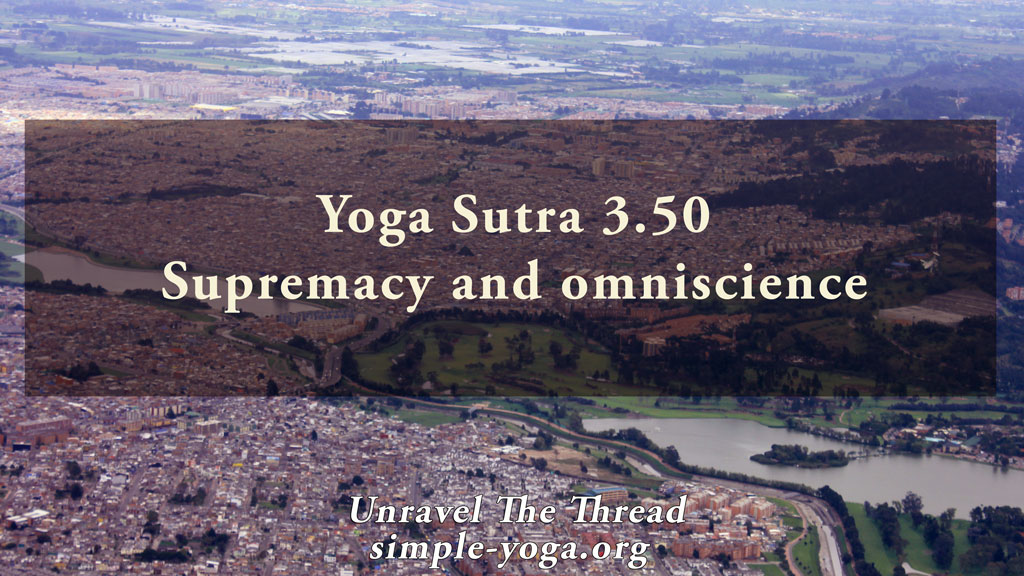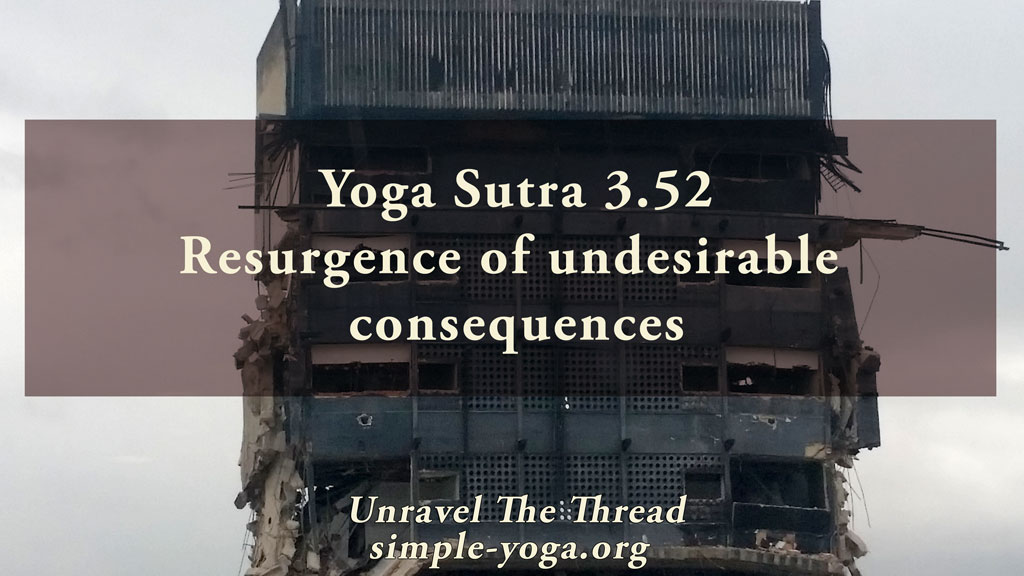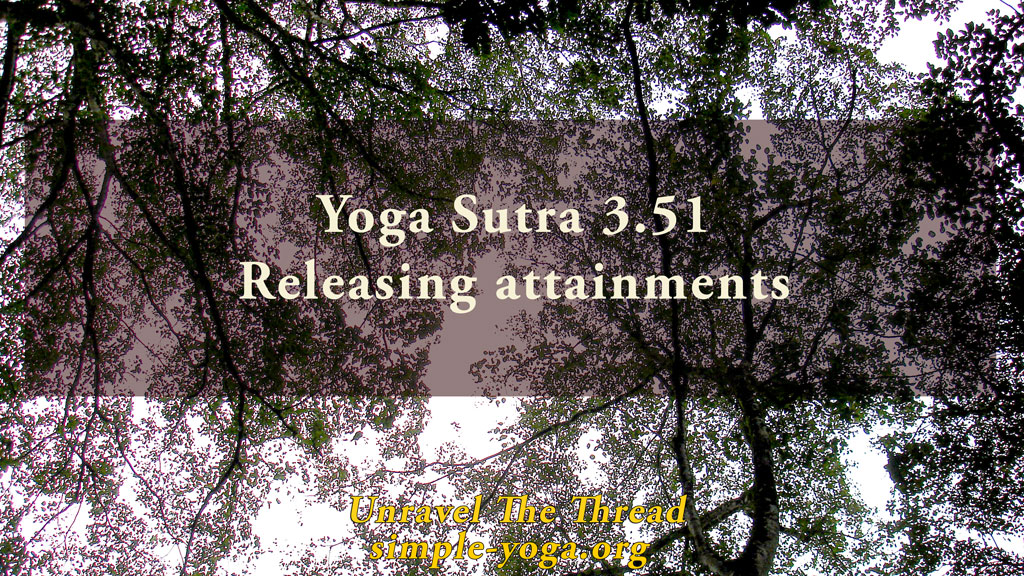
3.50 Supremacy and omniscience
April 19, 2022
3.52 Resurgence of undesirable consequences
April 29, 2022
3.50 Supremacy and omniscience
April 19, 2022
3.52 Resurgence of undesirable consequences
April 29, 20223.51 Releasing attainments

3.51 Releasing even those attainments and removing the remaining seeds of afflictions delivers liberation.
The journey of yoga is a journey of releasing restrictions to the endless manifestation of life in its infinite diversity. By removing the focus on the limited realm of the sense of self, the sense of being an “I,” the practitioner understands experientially the extraordinary richness of life and nature. The siddhis emerge when the practitioner releases her attachments to her opinions, beliefs, and other ways of being. Then, a profound understanding of the timeless interaction between consciousness and matter develops resulting in the extraordinary powers described in this chapter, the siddhis. This gradual process consists of returning persistently to presence (abhyasa) while releasing judgment and expectations (vairagya). Similarly, all limbs of yoga require a combination of this patient persistence. For instance, in meditation practice you learn to concentrate first, then you soften the amount of effort so that you can remain focused with minimal energy expenditure. The journey towards liberation is a progression towards the subtlest perception. After focusing on the distinction between pure awareness and one’s individual awareness introduced in the previous sutra, all of nature in its grandeur is clearly recognized as a vehicle for awareness and not awareness itself. All the attainments presented in Chapter Three of the Yoga Sutra are only vehicles for liberation. This differentiation is the antidote to ignoring one’s nature (avidya 2.3 to 2.5). In fact, it is the discriminative awareness (viveka) presented as the path to liberation in sutra 2.26. When the practitioner has reached this level, even the capacity to discern between pure awareness and individual awareness (viveka) is seen as one more way of being (vrtti). Once again, everything that is no longer needed, regardless of its previous usefulness, is released. By releasing all ways of being, the last impressions stored in one’s awareness (samskaras) are effectively deactivated. There is nothing else to focus on. This is the transition from integration with a seed (sabija samadhi) and integration without a seed (nirbija samadhi) talked about in sutras 1.17, 1.18, and 1.47 to 1.51; as well as at the beginning of this chapter in sutras 3.7 and 3.8. Only when everything is released (vairagya) is there liberation. This liberation emerges when there is no longer an illusion of separateness.
Where are you on your path towards liberation?
What ways of being are you holding on to?
Which ones have you identified as unhelpful and released?
Which ways of being are still serving a purpose?
Are there any moments when the notion of “I” becomes less established?
As usual, one more way of exploring the meaning of this sutra is by chanting it.
You can choose to chant it in its traditional form with some of the words coming together:
3.51 tadvairāgyādapi doṣabījakṣaye kaivalyam
तद्वैराग्यादपि दोषबीजक्षये कैवल्यम् ॥५१॥
Another option is to chant each word in the sutra individually:
- tat
- vairāgyāt
- api
- doṣa
- bīja
- kṣaye
- kaivalyam
If you prefer, you may listen to the podcast:
This is an excerpt from the book Unravel the thread: Applying the ancient wisdom of yoga to live a happy life
If you find Simple-Yoga.org and Unravel the thread useful, consider supporting my labor with a donation, you may also donate using PayPal or Venmo. Thank you!
